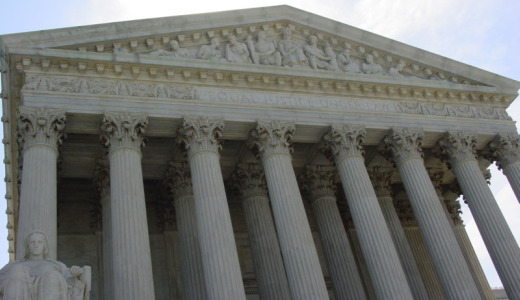
The Supreme Court, in its Jan. 21 decision, replaced the principle of “one person, one vote” with “one dollar, one vote” by allowing corporations to spend unlimited amounts to support or oppose political candidates. Let’s look at some numbers.
In 2008, for the first time, about $2.5 billion was spent on all the congressional campaigns combined. That’s a lot of money. But compared to what? Goldman Sachs is spending $16 billion on compensation this year, much of it in bonuses. In a concession to popular anger, the giant bank reduced its bonus pool by one-half billion dollars, and is donating another half-billion to charity. All the big Wall Street banks together are expected to give out over $100 billion in bonuses.
The Wall Street banks together could take a measly $2.5 billion, or $5 billion, or $10 billion out of their $100 billion bonus pool, and buy Congress, and they would hardly feel the pain. (Yes, I know that in many ways, they’ve already done that. But this makes it a lot easier for them).
That’s only the banks. Think of the oil companies, the energy companies, the big military contractors. All buying ads in your district, warning that you will lose your job if you elect a representative that challenges their right for unlimited profits, unlimited tax breaks, unlimited environmental damage.
There’s one more set of numbers to look at.
Most of the media has reported that the Supreme Court decision allows both corporations and labor unions to spend unlimited amounts to support candidates. This is false. Neither unions nor corporations can spend more money than they have.
We have already seen that the financial industry alone could easily spend $10 billion to buy elections. All U.S. corporations together could probably spend $50 billion.
In the 2008 elections, unions spent about $100 million. That was a record for the labor movement, and is probably about the top they can afford. Wall Street’s bonus pool this year is one thousand times as big.
Another way of looking at it: A very rough estimate puts total union income at about $10 billion per year. Most of that goes to pay staff and officer salaries, rent, utilities, arbitrators’ fees and other necessary expenses. That might leave $1 billion left over for “discretionary” spending — organizing, member education, political action. (*See note below.)
Corporate profits are in the neighborhood of $1,300 billion per year. This corporate discretionary money pool is 1,300 times as large as labor’s. This is the pool each side can dip into for political campaigns. When you hear about the political influence of “big corporations” and “big labor”, the real story is that of the corporate shark and the union sardine.
Of course, unions and corporations are different in other ways. Corporations are controlled by a handful of top stockholders and executives, and their purpose is to make maximum profit while their owners avoid legal responsibility for their actions. Unions are organizations of working people where each member has a vote. The worst union is more democratic than any big corporation.
The power of corporations is their money. The strength of unions is in the solidarity of their members and the support of other workers. Union sardines have been winning victories against corporate sharks for over a hundred years. They will continue to win victories, including political victories. But the Supreme Court decision sure makes the fight harder.
(*Note: My figures for union income are very rough. I could be off by quite a lot. Corporations could have anywhere between 500 times and 2,500 times as large a financial pool compared with labor. That doesn’t affect the main argument.)
Photo: http://www.flickr.com/photos/17694496@N00/ / CC BY-SA 2.0

MOST POPULAR TODAY

High Court essentially bans demonstrations, freedom of assembly in Deep South

Resource wars rage in eastern Congo, but U.S. capitalism only sees investment opportunity

U.S. imperialism’s ‘ironclad’ support for Israel increases fascist danger at home

UN warns that Israel is still blocking humanitarian aid to Gaza







Comments